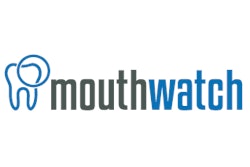
Here's the bottom line: We will cycle through reopening and closing and reopening in many communities.
In case you weren't aware, the ADA recently updated its interim guidelines on infection control. Last week, the ADA also released a flowchart (page 2) for decision support on management of emergency and urgent care. This is very helpful for working right now, as we are told that we need to have our offices remain closed at least until April 30.
 Margaret Scarlett, DMD.
Margaret Scarlett, DMD.This, plus a wonderfully inspiring letter from ADA President Chad Gehani, DDS, on COVID-19 resources, gives me some hope that good news is coming soon. As A Tale of Two Cities begins, "It was the best of times, it was the worst of times." This describes both the leadership and inspiration of these COVID-19 times, along with the chilling statistics that blare incessantly on every news outlet.
Like most of my colleagues, I'd like to start seeing patients for nonurgent care. But first, I am carefully analyzing the data in my area (Atlanta) to help me anticipate when my local health department, Fulton County Health Department, will determine the best date to reopen. They will be looking at the same data to ensure the safety of patients, the dental team, and dentists in my area.
This data analysis includes local hospital admissions for pulmonary issues, local health department information and deaths, and the availability of proper personal protective equipment (PPE) and other infection control materials. Data, not dates, are what we are looking at. Our peak is supposed to be April 20, and yours may be sooner in New York and later in Texas. On a practice level, we can use this time wisely to review our infection control policies and, if needed, revise them in accordance with the ADA's interim guidelines.
When will we be able to open our practices for nonurgent care? There are no absolutes, as we are still learning about the novel coronavirus. If a vaccine or treatment is proved to be effective, then what comes after this will change.
But, for now, reopening decisions have to consider a combination of factors that include the status of the epidemic in your area, the healthcare resources available for providing safe care, and what your health authority guidance is. Once again, we don't have a specific date, but these data are relevant for reopening. Vital Strategies has a fact sheet that provides helpful draft guidance on these.
The bad news is that, if we, like other countries, have the same epidemic, we may have to reopen and close, perhaps several times. Like aftershocks in an earthquake, we may see some small epidemic curves after this first tsunami wave of COVID-19 cases.
Using a teledentistry platform such as MouthWatch TeleDent can help you remain connected to your patients and maintain continuity of care during these residual epidemic curves.
The following are what I believe are the prerequisites for a "green light" to open your practice.
Status of the pandemic
You should see a sustained reduction of COVID-19 attributed deaths in the last 14 days in your local hospital, Veterans Affairs (VA) hospital, or regional hospital. Check with your state and local health department for local testing data, including cases not linked to a specific source case, indicative of community spread. I like COVID-view from the U.S. Centers for Disease Control and Prevention (CDC) because it looks at pulmonary admissions data from hospitals, etc. I wish it were real-time, but you can see what happened last week.
Revamp your infection control practices
For many, this is a time to make some permanent changes to business as usual. This includes reviewing and improving your infection control policies and procedures, your equipment, and your supplies.
Speaking of supplies, when the local hospitals have adequate PPE on hand and they return to elective surgeries, then it may be time for you to properly equip your office for reopening (for example, with fluid barrier gowns and shoe covers, face shields, gloves, and N95 masks for any procedure likely to generate aerosols) and review the surface disinfection procedures that are outlined in the interim guidance from the ADA.
Check in with health authorities
Such authorities include the CDC, the ADA, your state dental board, and your state and local health departments.
We have taken our local health departments for granted, since most of us have practiced dentistry without addressing pandemics. In addition to HIV/AIDS, Middle East respiratory syndrome (MERS), and severe acute respiratory syndrome (SARS) over the past 30 years, they are always on the front line of defense against pandemics. Remember, smallpox was a pandemic which was eliminated with vaccines more than 40 years ago.
What's more, your local health department does testing and contact tracing routinely and will be a local resource for where testing is available. You might ask what contact tracing is, and you would be right to ask since you can't "see" what it prevents. Contact tracing is the "bread and butter" of health departments, just like operative dentistry is for us. This is the footwork that health departments do when someone is identified as a positive case. All of an infected person's contacts are investigated to determine what their exposure is and they are tested and quarantined as necessary.
Once both antibody and antigen COVID-19 tests are available in your community, they will show in real-time what your community epidemic will be. In addition to COVID-view, other good resources are the CDC interim guidance for dental settings and the updated CDC guidelines.
Finally, check your state board website and that of your liability insurer regularly. Review these as necessary to help you anticipate when you may reopen, as they are changing rapidly. Let's all hope that the data planets come into alignment in the very near future and we can return to practicing nonurgent dentistry once again.
Margaret Scarlett, DMD, is an infectious and chronic disease prevention specialist, dentist, and author. For 30 years, Dr. Scarlett has provided expert guidance on infectious diseases and infection control as a consultant to the Centers for Disease Control and Prevention, the World Health Organization, the Pan American Health Organization, the United States Agency for International Development, the American Red Cross, and many consumer health companies.
The comments and observations expressed herein do not necessarily reflect the opinions of DrBicuspid.com, nor should they be construed as an endorsement or admonishment of any particular idea, vendor, or organization.


















